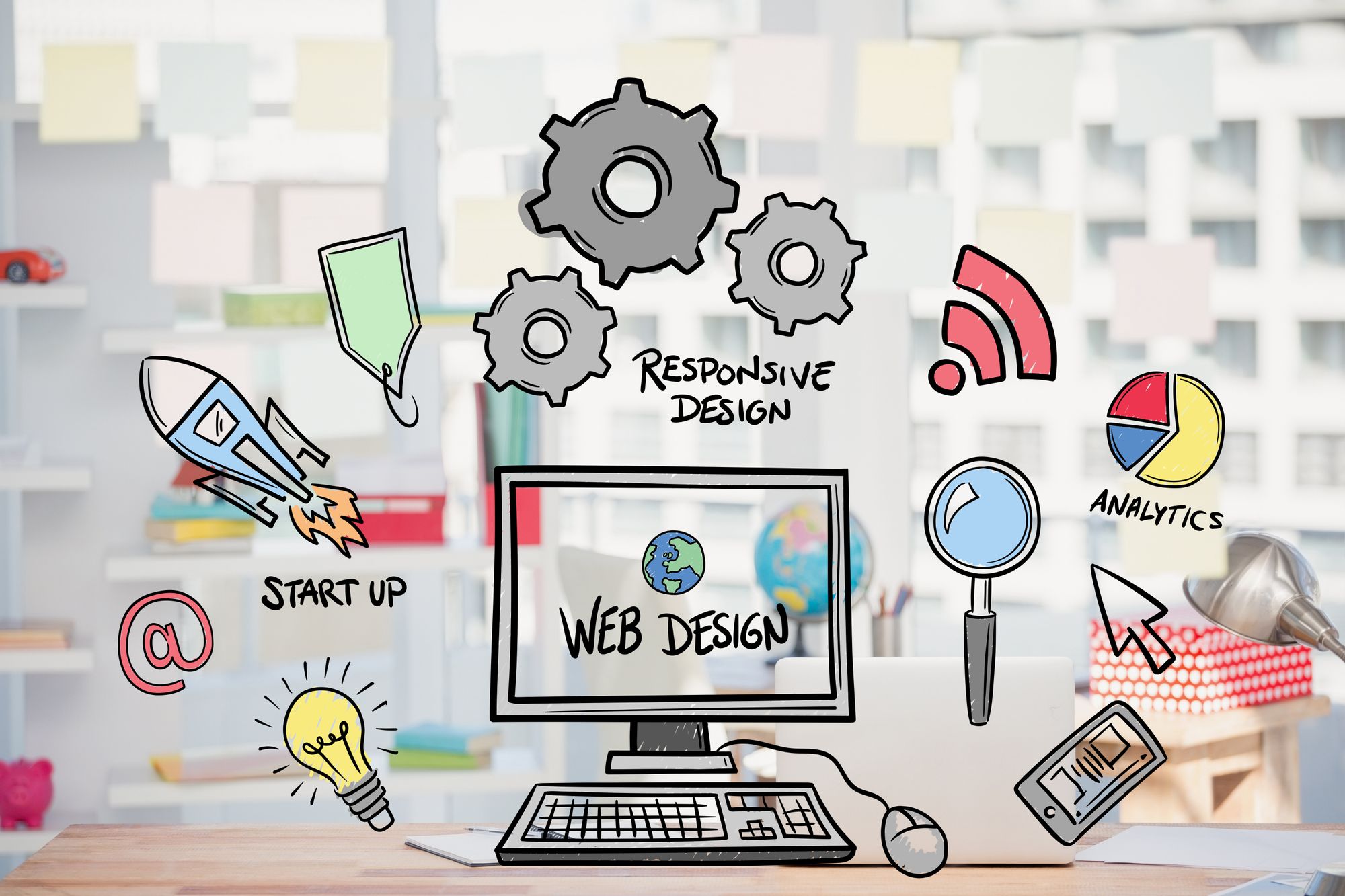Stand Out in the Digital World with Tailored Website Design Solutions
Stand Out in the Digital World with Tailored Website Design Solutions
Blog Article
Maximize Customer Experience With Ingenious Internet Site Layout Solutions
In today's electronic landscape, making best use of individual experience through cutting-edge website layout solutions is necessary for services seeking to involve their target market successfully. By embracing user-centric layout concepts, organizations can develop interfaces that not only satisfy customer requirements yet likewise improve general satisfaction. Secret elements such as receptive layouts, intuitive navigation, and reliable visual hierarchy play a critical function in this procedure. The integration of interactive elements can additionally boost the user trip, prompting a reevaluation of standard design strategies. What approaches might emerge when we think about the advancing expectations of customers?
Comprehending User-Centric Design

To carry out user-centric style efficiently, it is necessary to carry out detailed research study, including customer meetings, studies, and functionality screening. These research study approaches supply important information that educates style decisions, guaranteeing that the final product straightens with user assumptions. Furthermore, creating individual characters can help designers imagine and empathize with the end-users, directing the layout procedure towards much more relevant services.
In addition, repetitive design is a vital component of user-centric approaches. By continually screening and refining designs based upon user responses, designers can determine pain factors and areas of renovation, causing a much more polished final product. Eventually, user-centric style is not just a stage in the advancement process however a continuous dedication to focusing on customer requirements, leading to more engaging and reliable digital experiences.
Significance of Responsive Layouts
As electronic interactions progressively take place throughout a selection of tools, the significance of receptive formats can not be overstated. A receptive design makes sure that an internet site adapts flawlessly to various display dimensions, from desktop computer monitors to smartphones. This versatility is essential in today's multi-device landscape, where users anticipate a appealing and regular experience no matter how they access web content.
The main benefit of responsive style is improved individual contentment. When a site is optimized for all tools, it reduces the requirement for zooming, scrolling, or horizontal navigation, which can frustrate customers and lead to higher bounce rates. In addition, search engines like Google focus on mobile-friendly sites in their ranking formulas, making receptive designs essential for reliable search engine optimization techniques.
Furthermore, receptive layouts promote much easier upkeep and updates. Rather than taking care of separate variations of an internet site for various tools, a single, fluid layout can be changed, saving time and resources. This holistic strategy not only enhances effectiveness however additionally promotes brand comprehensibility across platforms. Ultimately, investing in responsive formats is not simply a fad; it is a fundamental principle of modern website design that significantly boosts user experience and involvement.
Enhancing Navigation and Accessibility
Effective navigating and access are critical parts of a properly designed web site, considerably affecting customer engagement and fulfillment. An easy to use navigating structure permits site visitors to discover information promptly and intuitively, minimizing stress and boosting the possibility of repeat check review outs. Applying clear, detailed tags for navigation web links, along with a sensible hierarchy, can assist individuals perfectly through the web site.
Ease of access is similarly important, making sure that all individuals, no matter their capabilities or specials needs, can engage with the site efficiently. This can be attained through making use of suitable shade contrasts, message dimensions, and alt text for pictures, which with each other enhance the experience for aesthetically damaged users. Continued Incorporating key-board navigation and display visitor compatibility expands accessibility for individuals with varied requirements.
Routine usability screening can provide useful understandings into navigation effectiveness and accessibility issues. By gathering responses from genuine individuals, developers can identify pain points and make educated adjustments. Eventually, prioritizing navigation and ease of access not only fosters inclusivity however also grows a positive individual experience, strengthening the brand name's commitment to top quality and customer treatment in an increasingly electronic landscape.
Using Visual Power Structure Efficiently
Visual pecking order functions as a directing framework in web site design, directing users' interest to one of the most vital components on a web page. By tactically arranging visual elements such as spacing, typography, and color, developers can develop a clear pathway for customers to comply with. This framework not only improves customer experience but additionally enhances material comprehension.
One reliable means to develop aesthetic pecking order is via the usage of size and scale. Larger elements normally draw in even more focus, making headings and essential visuals prominent. Enhancing this technique with contrasting shades can further separate key web content from additional details, guaranteeing that vital information stands out.
In addition, the setup of components plays a crucial role in directing customer interaction. Using a grid design can develop a cohesive circulation, while whitespace aids to different material and minimize cognitive load - Website Design. This deliberate spacing permits users to process information more easily, causing improved involvement
Lastly, making use of consistent design patterns assists strengthen aesthetic hierarchy, supplying customers with familiar signs as they browse the site. By prioritizing these concepts, designers can properly take full advantage of customer experience, making certain that visitors can effortlessly locate the information they look for.
Integrating Interactive Components
The incorporation of interactive elements into website layout can considerably enhance customer engagement and overall experience. Interactive features such as surveys, tests, and sliders not just captivate customers yet additionally advertise energetic involvement, making the searching experience extra memorable. By urging customers to communicate, websites can efficiently keep interest and reduce bounce prices.
Furthermore, integrating vibrant web content like computer animations and hover effects includes an enticing layer of interactivity. These aspects can direct customers intuitively through the website, highlighting vital info and contacts us to activity. As an example, computer animated switches can draw attention and boost click-through rates.
Furthermore, personalization through interactive devices such as chatbots or suggestion engines permits web sites to provide to specific preferences, cultivating a feeling of connection. This customized approach not just enhances user complete satisfaction however likewise encourages repeat check outs.
Including analytics devices to track interactions provides useful understandings right into individual actions, enabling continual enhancement of the interactive components. Inevitably, a properly designed interactive experience transforms a passive browsing session right i was reading this into an engaging journey, leading to boosted customer fulfillment and loyalty. Integrating interactive components is important for making the most of individual experience in modern-day internet site design.
Conclusion

In today's electronic landscape, maximizing individual experience through ingenious site style services is imperative for organizations seeking to involve their audience properly. Inevitably, prioritizing navigation and access not just fosters inclusivity yet also grows a positive customer experience, strengthening the brand name's commitment to high quality and individual care in a significantly digital landscape.

In conclusion, maximizing individual experience through ingenious site style remedies requires a dedication to user-centric concepts. Website Design.
Report this page